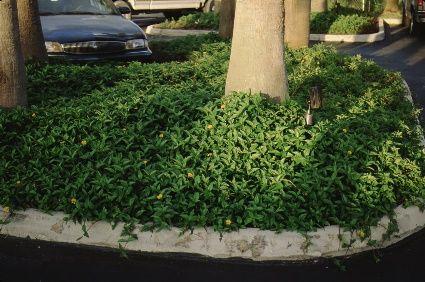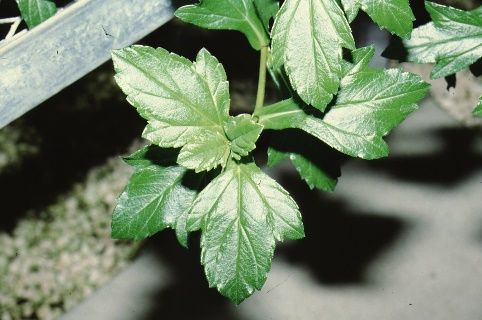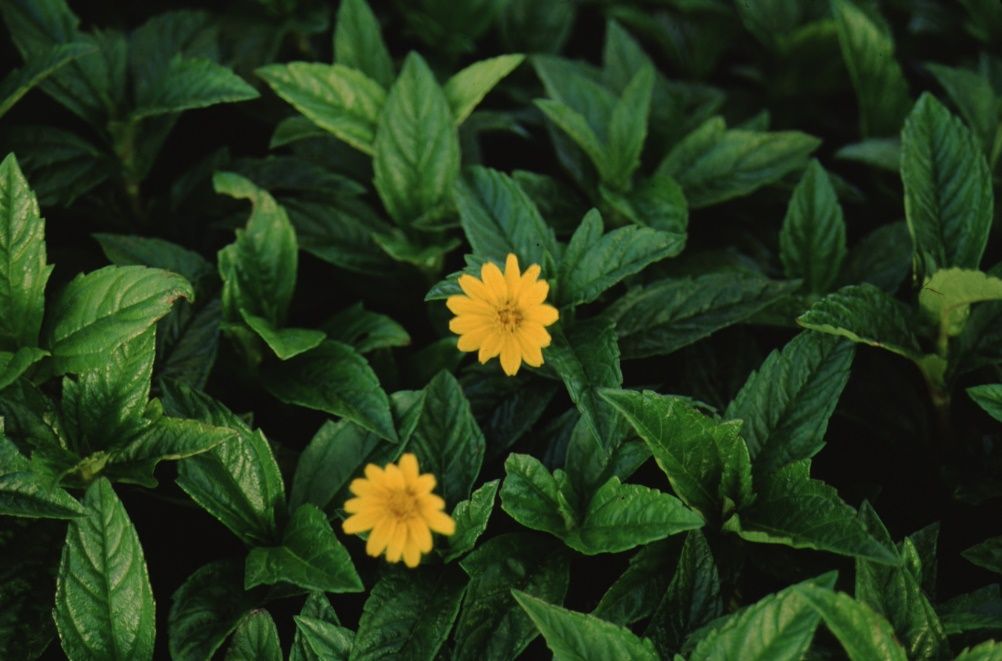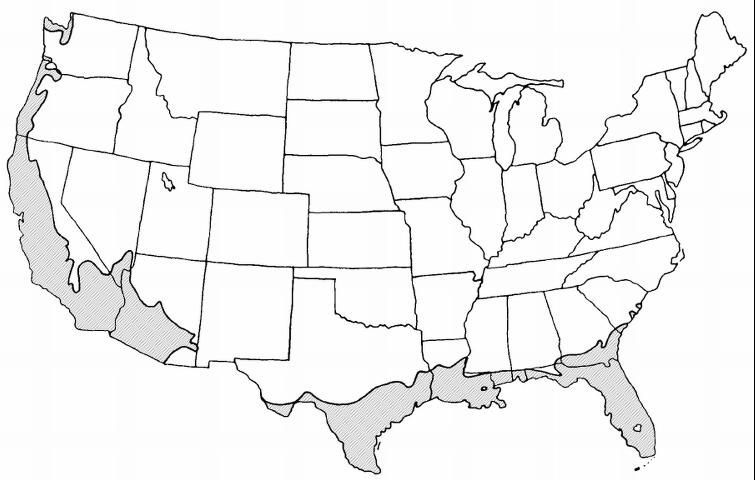Sphagneticola trilobata: Wedelia is a FISC Category 2 Invasive plant in Florida. Information on this plant is being provided for identification in the landscape to encourage removal and identification at nurseries to discourage purchase.
Introduction
It would be hard to find another groundcover better suited to hot, dry conditions than wedelia. Attractive, glossy, dark green, lobed leaves, rapidly spreading growth habit, and a continuous display of small, bright yellow, daisy-like blooms create a much-favored landscape plant.

Credit: Edward F. Gilman, UF/IFAS

Credit: Edward F. Gilman, UF/IFAS

Credit: Edward F. Gilman, UF/IFAS
General Information
Scientific name: Sphagneticola trilobata
Pronunciation: sfeg-net-ee-COLE-ah try-loe-BAY-tuh
Common name(s): wedelia, creeping oxeye
Family: Asteraceae
Plant type: perennial; herbaceous
USDA hardiness zones: 8B through 11 (Figure 4)
Planting month for zone 8: year-round
Planting month for zone 9: year-round
Planting month for zone 10 and 11: year-round
Origin: native to Central America, North America, Mexico, South America
Invasive potential: invasive and not recommended by UF/IFAS faculty (reassess in 10 years)
Uses: mass planting; container or above-ground planter; naturalizing; hanging basket; cascading down a wall
Availability: generally available in many areas within its hardiness range

Credit:
Description
Height: 0.5 to 1 feet
Spread: depends upon supporting structure
Plant habit: upright
Plant density: dense
Growth rate: fast
Texture: medium
Foliage
Leaf arrangement: opposite/subopposite
Leaf type: simple
Leaf margin: serrate; lobed
Leaf shape: obovate
Leaf venation: bowed; brachidodrome
Leaf type and persistence: evergreen
Leaf blade length: 2 to 4 inches
Leaf color: green
Fall color: no fall color change
Fall characteristic: not showy
Flower
Flower color: yellow
Flower characteristic: year-round flowering
Fruit
Fruit shape: elongated
Fruit length: less than 0.5 inch
Fruit cover: dry or hard
Fruit color: brown
Fruit characteristic: inconspicuous and not showy
Trunk and Branches
Trunk/bark/branches: not applicable
Current year stem/twig color: green
Current year stem/twig thickness: medium
Culture
Light requirement: plant grows in part shade/part sun
Soil tolerances: extended flooding; alkaline; clay; sand; acidic; loam
Drought tolerance: moderate
Soil salt tolerances: good
Plant spacing: 18 to 24 inches
Other
Roots: not applicable
Winter interest: no special winter interest
Outstanding plant: not particularly outstanding
Pest resistance: long-term health usually not affected by pests
Use and Management
Suited to a wide variety of conditions, wedelia will cover rough, rocky ground or wet drainage ditches, and even tolerates some degree of foot traffic. Producing the most bloom in full sun, frost-free locations, wedelia will grow in shade and still bloom, although only sparsely. Though killed to the ground by frost, wedelia's rapid growth quickly returns with warm weather (in the northern part of USDA hardiness zone 9), the long, creeping stems rooting wherever they touch moist soil. Set the plants on 18 inch centers. Creating a dense mat of foliage, wedelia rarely needs pruning to control its height but can tolerate severe trimming, even occasional mowing on a high setting, if plants need to be rejuvenated.
Wedelia has a vine-like habit and will grow up into shrubs and trees planted in the bed. When used as a groundcover in and among shrubs, it is a high maintenance plant. It looks best planted in a mass over large areas. Like ivy and other creepers, it will require regular trimming along the edge of the groundcover bed to control its spread. It may be best used as a container plant where it will cascade over the side forming a weeping mound of yellow flowers. It has escaped cultivation in certain regions of south Florida where it proliferates, especially in wet areas.
Propagation is easily accomplished by setting unrooted tip cuttings in the landscape soil where new plants are wanted, or by layering, the stems rooting quickly.
Pests and Diseases
Though relatively sturdy, wedelia can occasionally be infected with chewing insects and mites.
No diseases are of major concern.